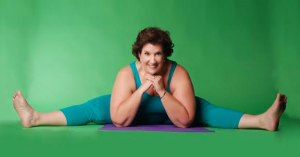Increase Metabolism with Yogic Breathing Practices
By John M. de Castro, Ph.D.
“different yoga postures and breathing practices, which involve the control of respiratory rate and retention periods, may produce markedly different metabolic effects.” – Anupama Tyagi
Breathing is essential for life and generally occurs automatically. It’s easy to take for granted as it’s been there our entire lives. Nevertheless, we become more aware of it when it varies with circumstances, such as when we exercise and also in emotional states, especially fear and anxiety. But we rarely notice it during everyday ongoing life. Yet, its characteristics are associated with our state of well-being. Slow deep breathing is characteristic of a healthy relaxed state. Breathing exercises are common in yoga and meditation practices and have been found to have a number of beneficial effects. Classically, some yogic breathing techniques have been characterized as cooling. But this assertion has not been investigated with controlled scientific research.
In today’s Research News article “Body Temperature and Energy Expenditure During and After Yoga Breathing Practices Traditionally Described as Cooling.” (See summary below or view the full text of the study at: https://www.ncbi.nlm.nih.gov/pmc/articles/PMC6977599/ ) Telles and colleagues recruited healthy participants, aged 19-25 years, who were experienced with yogic breathing. They had 4 28-minute sessions of 18 minutes of yogic breathing techniques that required mouth breathing with the protrusion of the tongue of sheetali pranayama or sitkari pranayama, or breath awareness, or quietly lying down. The sessions occurred on individual days in randomized orders. During each session they were measured for body temperature and oxygen consumption.
They found that during both of the yogic breathing sessions there were significant increases in body temperature, oxygen consumption, carbon dioxide eliminated, estimated energy expenditure, and non-protein respiratory quotient. On the other hand, during quiet lying down there were significant decreases in oxygen consumption, carbon dioxide eliminated, estimated energy expenditure.
Hence, the yogic breathing was not “cooling” but activating. Indeed, these results suggest that the yogic breathing techniques produce a mild hypermetabolic state that is similar to that found with mild exercise. It can be speculated that it is the activation produced by these techniques that is responsible for some of the benefits of yogic breathing techniques. Future research is needed to test this hypothesis.
So, increase metabolism with yogic breathing practices.
“We breathe constantly, it’s what we do. We cannot make ourselves stop breathing, except to only hold our breath for a few minutes, thankfully. However, what we can control is how we breathe. This control of how oxygen enters and exits the body has been linked to the improvement of bodily function and our nervous system, which includes stimulating our metabolism.” – Heather Lancaster
CMCS – Center for Mindfulness and Contemplative Studies
This and other Contemplative Studies posts are also available on Google+ https://plus.google.com/106784388191201299496/posts and on Twitter @MindfulResearch
Study Summary
Telles, S., Gandharva, K., Sharma, S. K., Gupta, R. K., & Balkrishna, A. (2020). Body Temperature and Energy Expenditure During and After Yoga Breathing Practices Traditionally Described as Cooling. Medical science monitor basic research, 26, e920107. https://doi.org/10.12659/MSMBR.920107
Abstract
Background
In traditional yoga texts, sheetali and sitkari pranayamas are described as cooling. The present study was aimed at recording the surface body temperature, oxygen consumed, and carbon dioxide eliminated before, during, and after performance of sheetali and sitkari pranayamas.
Material/Methods
Seventeen healthy male volunteers with ages between 19 to 25 years (average age 20.7±1.8 years) were assessed in 4 sessions, viz. sheetali pranayama, sitkari pranayama, breath awareness and quiet lying, on 4 separate days, in random sequence. The axillary surface body temperature (TRUSCOPE II, Schiller, China) and metabolic variables (Quark CPET, COSMED, Italy) were recorded in 3 periods: before (5 minutes), during (18 minutes), and after (5 minutes), in each of the 4 sessions. The heat index was calculated in the before and after periods, based on recordings of ambient temperature and humidity. Data were analyzed using SPSS (Version 24.0).
Results
Body temperature increased significantly during sheetali and sitkari (p<0.05, p<0.01; respectively) while it decreased after breath awareness and quiet lying down (p<0.01, p<0.001; respectively) when compared with respective post-exercise states. Oxygen consumption increased by 9.0% during sheetali (p<0.05) and by 7.6% during sitkari (p<0.01) while it decreased significantly during (p<0.05) and after (p<0.01) quiet lying down compared to respective pre-exercise states.
Conclusions
The results do not support the description of these yoga breathing practices as cooling. These yoga breathing practices may be used to induce a mild hypermetabolic state.
https://www.ncbi.nlm.nih.gov/pmc/articles/PMC6977599/

